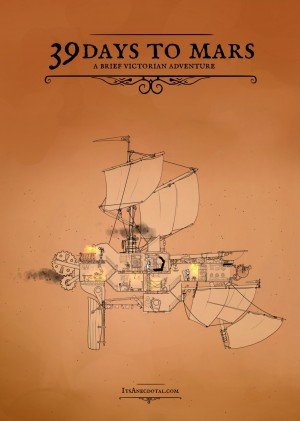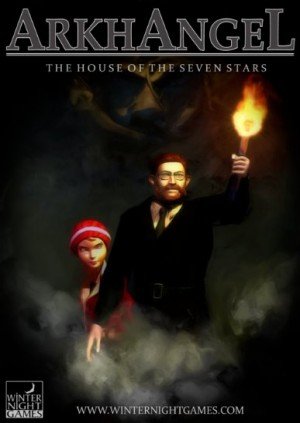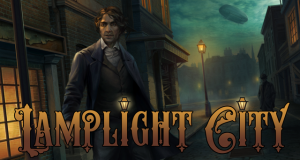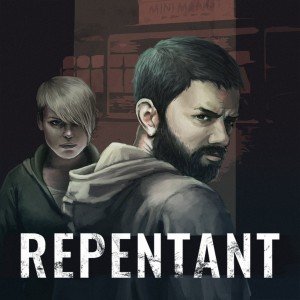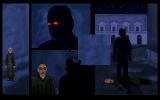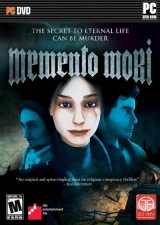Review for Return of the Obra Dinn

I was one of the smartest kids in my elementary school. This did not continue into middle or high school, and definitely not into college, where I was spectacularly average, but for a couple of years I was on top of the world because I was a “gifted” child, which meant that once a week I was sent to a special class with the other gifted kids where we would work through logic grid puzzles handed out by our teacher.
These puzzles, if you’re not familiar, tasked the solver with identifying a group of people based on a series of written clues. Who was who at the birthday party? “Joe wore red and was seated next to the girl in green.” “Nancy wore purple and doesn’t eat meat.” “Annie would never be caught dead in green.” By filling a grid with X’s and O’s to track people’s possible identities and attributes, you’d eventually arrive at a full picture of the scenario. Who wore what? Who ate what? Who brought which gift?
Now take that birthday party puzzle and replace it with a ghost ship full of gruesome deaths and you’ve got the basic idea behind Return of the Obra Dinn, the newest game from Lucas Pope. Best known for his work on Papers, Please, Pope is a solo developer who crafts experimental games that refuse to stick to tried-and-true interfaces and methods of interaction. Obra Dinn follows that tradition, taking a scenario that could have played out as a bog standard adventure game and approaching it from a very different angle. The result is one of the few games where the detective work requires real, honest-to-God detecting to produce results, and for the most part that is extraordinarily satisfying.
In 1802, the merchant ship Obra Dinn set out from London for the Orient with 60 souls aboard. The next year, it failed to appear at its port of call at the Cape of Good Hope. Then in 1807, the ship drifted into view near Falmouth and was discovered to be void of all life. Piles of bones, scraps of cloths, and old bloodstains dot the ship. Clearly, some ugliness went down. You play an insurance inspector for the East India Company who is tasked with boarding the ship and determining what befell its personnel – in the exhausting detail that befits a claims investigator. This means that you have to not only ascertain what happened on the ship, you also have to record the identity of every member of the crew, the specific method of their demise, and the identity of their killer (if any). It’s a big task, especially since seamen of the day weren’t given to carrying photo IDs.
Luckily, you’ve been given a couple of gifts by a mysterious benefactor: a book containing information about the vessel, and a pocketwatch engraved with a skull, which for some reason allows the bearer to revisit the instant of a person’s death. So you board the Obra Dinn, armed with a crew roster, a collection of group sketches, a glossary of nautical terms and jobs, and a map of the boat’s layout, setting out to determine 60 identities and 60 causes of death.
As you explore the ship, you’ll encounter the remains of its deceased. Pointing the pocketwatch at each will load a short vignette – a few seconds of audio and then the sudden reveal of their exact instant of death, frozen in a gruesome tableau that can be examined at leisure. You move around freely in first-person using traditional keyboard/mouse or gamepad controls, peering like a morbid voyeur at a knife fight between two men, for example, the blood squirting from the neck of the poor soul who lost. In the vicinity, you can see others watching from their quarters or peering out from around corners. Some of the memories have larger scopes than others, allowing you to see what’s happening on the deck above or below, catching small glimpses of life aboard the ship.
There are no diaries to pore through, no audio logs to play, no conveniently labeled portraits hanging in the captain’s quarters. But through the painstaking and clever disbursement of information, these glimpses into the past are enough to solve the mystery: Hmm, this guy is well-dressed and often seems to appear standing right next to the Captain. And here he is with someone following close behind, carrying two plates of food. Is this one of the ship’s mates and his steward? But which one? First Mate, Second Mate, Third? This fellow’s bunk has a scimitar hanging from the wall near it; could he be the Persian seaman listed in the crew register? Someone said the name Brennan during the cutscene, so Brennan must be one of the men present… and so on.
Causes of death are usually easier to figure out, though you have to be sure to identify the killer as well. So-and-so was knifed by so-and-so, or electrocuted, or burned to death, or decapitated. The game features a hilariously long and macabre list of verbs from which to choose.
After you’ve correctly resolved any three fates, the game will chime in and confirm those as accurate, preventing you from relying too much on trial and error to progress. There are ways to use that fact to your advantage (such as when you’re really sure you’ve got two fates nailed down, you can rely more on guesswork for the third), but in general you have to rely on your wits to proceed. There’s a wonderful sense of accomplishment when you get things right, because YOU figured it out. It wasn’t handed to you, and it certainly wasn’t made easy.
Especially early on, trying to keep track of the details of 60 characters can be overwhelming. It’s slow going at first, as each new memory throws new faces and un-contextualized situations at you to parse, but confirming fates arms you with information to take into other memories (which can be revisited at any time), and eventually you build up enough of a mental picture of the ship’s crew and their tragic ends that the rest begin toppling like dominoes.
And it is primarily a “mental” picture. Much of this experience takes place in your head rather than on screen. Obra Dinn does not hold your hand as it asks you to identify these poor souls. You have the crew log and unlabeled sketches, but few tools for making connections outside of your own brainpower.
You can approach any person in a memory and bring up a list of other memories you’ve seen them appear in, or a list of all the crew present in the current memory (listed by their faces, of course, not their names). But that’s about the only help you get, and navigating between memory journal entries, maps, and crew log can be confusing and clunky due to inconsistent interface logic and a lack of labeling. It’s easy to forget whether clicking on a person’s face in one of the crew sketches will take you to the entry where they died, the crew list, or bring up a list of memories they appeared in. Jumping between sections (to check the glossary, for example) can lead to you losing your place and having to remember which entry you were examining before. In addition, there’s a lot of information that can’t be tracked in the journal, so I ended up with pages of crazy-person handwritten notes and just barely stopped short of buying a bulletin board, thumbtacks, and a spool of red string.
Every character here is identifiable without guesswork… technically. In practice, finding all of the clues requires an extremely keen eye, a mountain of patience, and a certain amount of outside knowledge. The game includes a brief glossary that defines terms like Bosun, Topman, Purser, and so on, but unless you’re aware of the distinctions in uniform between a ship’s stewards and its midshipman, you’re going to have to make some guesses or look up more specifics elsewhere. It helps to know a bit of profanity in various languages as well.
One thing I wish I knew going in is that the game is not generally trying to fake you out. If a character appears in a particular room, it’s probably because that’s their room. If someone speaks with a certain accent, that’s where they’re from. I spent so much time second guessing myself and looking for traps and subversions being laid out by the game that I missed several clarion-clear clues and struggled with identifying a number of what turned out to be fairly obvious characters.
Eventually the tale of the Obra Dinn becomes clearer, but this is not a story-heavy game. You won’t dig very deep into the crew’s backstories or motivations, and though a few characters have interesting and unexpected arcs, most of them exist as grist for the mill, being little more than bodies with names who die in awful ways. Even so, the narrative is satisfying and there are a number of surprises and clever moments along the way – the story takes some major left turns that seem to come from nowhere until you consider the events chronologically. The game also has a tragicomic tone that isn’t afraid to laugh at the absurd way some of its cast meet their maker, which is probably necessary to lighten the mood considering how many slashed throats, stab wounds, and chopped-off heads you’ll encounter.
These gruesome deaths are rendered in surprising detail considering the lo-fi, monochromatic art style. Emulating the early days of PC graphics as seen through the lens of modern technology, Obra Dinn is fully 3D but applies the 1-bit color and dithering patterns of late-‘80s black-and-white Macintosh games. The style embraces its limitations and creates striking high-contrast compositions that remain highly recognizable. The ship, while fictional, is an immaculate recreation of period-appropriate merchant ships, with seemingly every plank, bolt, and bit of rigging in place. Character models are expressive and full of intimate details that are essential for keeping everyone straight. Effects such as lightning or the explosion of a cannonball against the hull look remarkable frozen in time. Each memory is dynamically staged, with every person’s motion and emotion wonderfully telegraphed. Moving through them is like walking through a densely framed Hieronymous Bosch painting.
The sound design is also minimalistic but wonderfully integrated. The ship’s atmosphere is heightened by lapping waves, creaking beams, and jostling chains, and the short audio clips that play before each tableau are like tight little 10-15 second radio plays that are just as full of useful information as the silent imagery that follows. The voice acting is uniformly good; not every crew member gets voiced lines, but many of them do, each brought to life with suitably salty sailor vernacular and regional accents. The music is a high point, with a synthesized, pirate-y symphonic score that’s surprisingly jaunty and lends to the darkly comic proceedings. Text prompts are synced to the musical cues behind them, doling out info in time with small percussive string plucks in an extremely satisfying way.
Return of the Obra Dinn took me about six hours to complete, though you’re only really gated by your own ability to piece together the scenes. You can see everything the game has to offer in closer to two or three hours (except for one chapter that is saved until you’ve identified everyone and submitted your work) – but the rest of your time will be spent revisiting scenes again and again, whittling down the possible identities and fates of the crew. On paper that sounds frustrating, and occasionally it can be, but it is also thrilling and intellectually compelling, because Pope was brave enough to present a lengthy and challenging puzzle (and the entire game really is one big puzzle), and then step out of the way and allow you to solve it through your own ingenuity and resolve. I did an actual, unironic fist pump when I plugged in the final names and received the message: “All Fates Confirmed.” The end result for players is a small, tightly-focused puzzle experience, one that pushes your deductive muscles in ways that few games even aspire to.
Complimentary review copy graciously provided by GOG.com.











